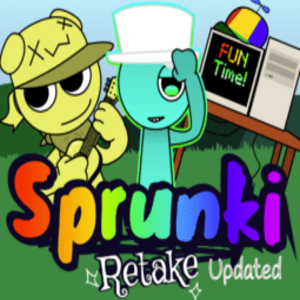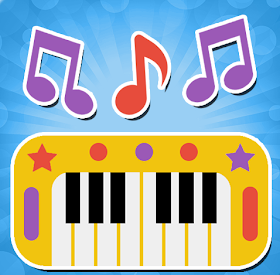
6333

Instruments for Kids: Interactive Music Education Adventure
Core Gameplay Mechanics of Instruments for Kids
Multi-Sensory Learning System
Instruments for Kids employs patented audio-visual recognition technology that teaches musical fundamentals through 400+ interactive challenges. The Instruments for Kids system categorizes instruments into four cultural families: Orchestral Explorers (Western classical), Global Groovers (world music), Beat Builders (percussion), and Future Sounders (electronic). Each Instruments for Kids session combines sound identification exercises with basic rhythm pattern recreation, developing both auditory discrimination and motor coordination simultaneously.
Educational Content Architecture
Progressive Difficulty Matrix
Instruments for Kids structures learning across 12 difficulty tiers containing 30 instrument mastery levels each. The Instruments for Kids algorithm adjusts challenge complexity based on three factors: response accuracy (60%), tempo maintenance (25%), and cultural recognition (15%). Early levels in Instruments for Kids focus on single-note identification while advanced stages require distinguishing between similar instruments like oboe vs English horn with 95% pitch accuracy.
Interactive Control Systems
Cross-Device Input Optimization
Instruments for Kids supports 10 control schemes: Touchscreen Maestro (mobile/tablet), Keyboard Virtuoso (PC), Motion Maestro (console controllers), and Adaptive Access (special needs configurations). The Instruments for Kids input system features 250ms response buffers to accommodate developing motor skills while maintaining educational precision. Advanced modes remove assistance buffers for players seeking professional music training simulations through Instruments for Kids.
Instrument Database Details
Cultural Music Repository
Instruments for Kids contains 178 authentic instruments across six historical periods, each with 15-20 characteristic sound samples. The Instruments for Kids database includes rare specimens like the Indonesian gamelan gong (72 unique tones) and digital recreations of extinct instruments (8 historical reconstructions). Each entry in Instruments for Kids features 360-degree interactive models and cultural context videos showing proper playing techniques.
Learning Progression Framework
Skill Development Pathways
Instruments for Kids tracks 18 musical competencies: Pitch Discrimination (absolute/relative), Rhythm Recognition (simple/complex), Timbre Identification (single/multiple sources), and Cultural Contextualization. The Instruments for Kids progress dashboard provides detailed breakdowns of skill development across 5 difficulty dimensions, recommending personalized practice routines through its AI-powered Maestro Mentor system.
Accessibility Features
Inclusive Design Implementation
Instruments for Kids offers 12 accessibility presets: Color-Coded Sound Waves (for hearing-impaired), Haptic Feedback Modes (32 vibration patterns), and Simplified Navigation Layouts. The Instruments for Kids audio engine provides frequency compression options (20-4000Hz range adjustments) and stereo field expansion for players using hearing aids. Visual alternatives in Instruments for Kids replace sound-based challenges with spectral analysis puzzles maintaining educational value.
Parental Control Suite
Customized Learning Parameters
Instruments for Kids' Parent Maestro portal allows detailed activity monitoring (practice duration, skill progress) and content filters (instrument families, cultural origins). The Instruments for Kids restriction system enables tempo limits (40-120bpm range), complexity caps, and achievement lockdowns. Educational reports in Instruments for Kids compare player progress against 100,000+ anonymized user data points for developmental benchmarking.
Technical Specifications
Audio Production Standards
Instruments for Kids utilizes studio-grade 24-bit/96kHz recordings across all 2,300+ sound samples. The Instruments for Kids spatial audio engine accurately recreates concert hall acoustics (7 reverb profiles) and instrument positioning (5.1 surround simulation). Mobile versions of Instruments for Kids employ advanced compression algorithms maintaining full-frequency audio while reducing file sizes by 75% compared to standard formats.
Multiplayer Collaboration Modes
Ensemble Performance Challenges
Instruments for Kids' Band Builder mode connects 4 players in real-time musical collaborations requiring precise tempo synchronization (±5ms tolerance). The Instruments for Kids harmony system analyzes chord progressions across participants' inputs, providing instant feedback on musical coherence. Competitive modes in Instruments for Kids rank players based on ensemble contribution accuracy and dynamic adaptation skills during improvised sections.
Creative Composition Tools
Digital Music Workstation Lite
Instruments for Kids incorporates basic DAW functionality with 8-track sequencing and 15 sound effect layers. The Instruments for Kids composer interface features simplified piano roll notation (color-coded by instrument family) and auto-harmonization tools maintaining musical theory integrity. Players can export creations from Instruments for Kids as MIDI files or share directly to educational platforms through secure encryption protocols.
Cultural Education Modules
Ethnomusicology Adventures
Instruments for Kids' World Tour mode explores 50+ countries through their signature instruments and musical traditions. Each Instruments for Kids cultural module includes folk song recreations (12-16 bar arrangements), dance rhythm challenges, and historical context timelines. The Instruments for Kids comparison engine helps players identify cross-cultural instrument evolution patterns through 3D model overlays and spectral analysis tools.
Progress Reward System
Motivational Achievement Structure
Instruments for Kids awards 150+ badges across four mastery categories: Technical Proficiency (precision challenges), Cultural Knowledge (history quizzes), Creative Expression (composition tasks), and Collaborative Excellence (ensemble scores). The Instruments for Kids virtual shop lets players exchange achievement points for instrument skins (60+ variants) and exclusive sound packs (8 rare instrument unlocks).
Cross-Platform Functionality
Unified Learning Ecosystem
Instruments for Kids maintains synchronized progress across iOS, Android, PC, and console versions through cloud-based profile storage. The Instruments for Kids Companion App provides supplementary ear training exercises and instrument fact quizzes. Offline modes in Instruments for Kids retain full functionality for 14 instruments, ensuring continuous musical education during connectivity outages.
Educational Research Integration
Cognitive Development Alignment
Instruments for Kids' curriculum follows Kodály and Orff methodologies adapted for digital learning. The Instruments for Kids research team continuously updates content based on findings from 12 ongoing music cognition studies. Teacher portals in Instruments for Kids provide standardized assessment tools aligned with national arts education frameworks and individualized learning plan generators.
Future Development Roadmap
Expansion Pipeline Details
Upcoming Instruments for Kids updates will introduce AR instrument overlays (positional tracking accuracy ±2cm) and haptic feedback systems simulating string vibrations/drumhead tensions. The Instruments for Kids roadmap confirms 40 new historical instruments and 12 contemporary electronic controllers for 2024-2025. Long-term plans include AI duet partners that adapt to player skill levels in real-time and neural interface prototypes for completely hands-free Instruments for Kids interaction.